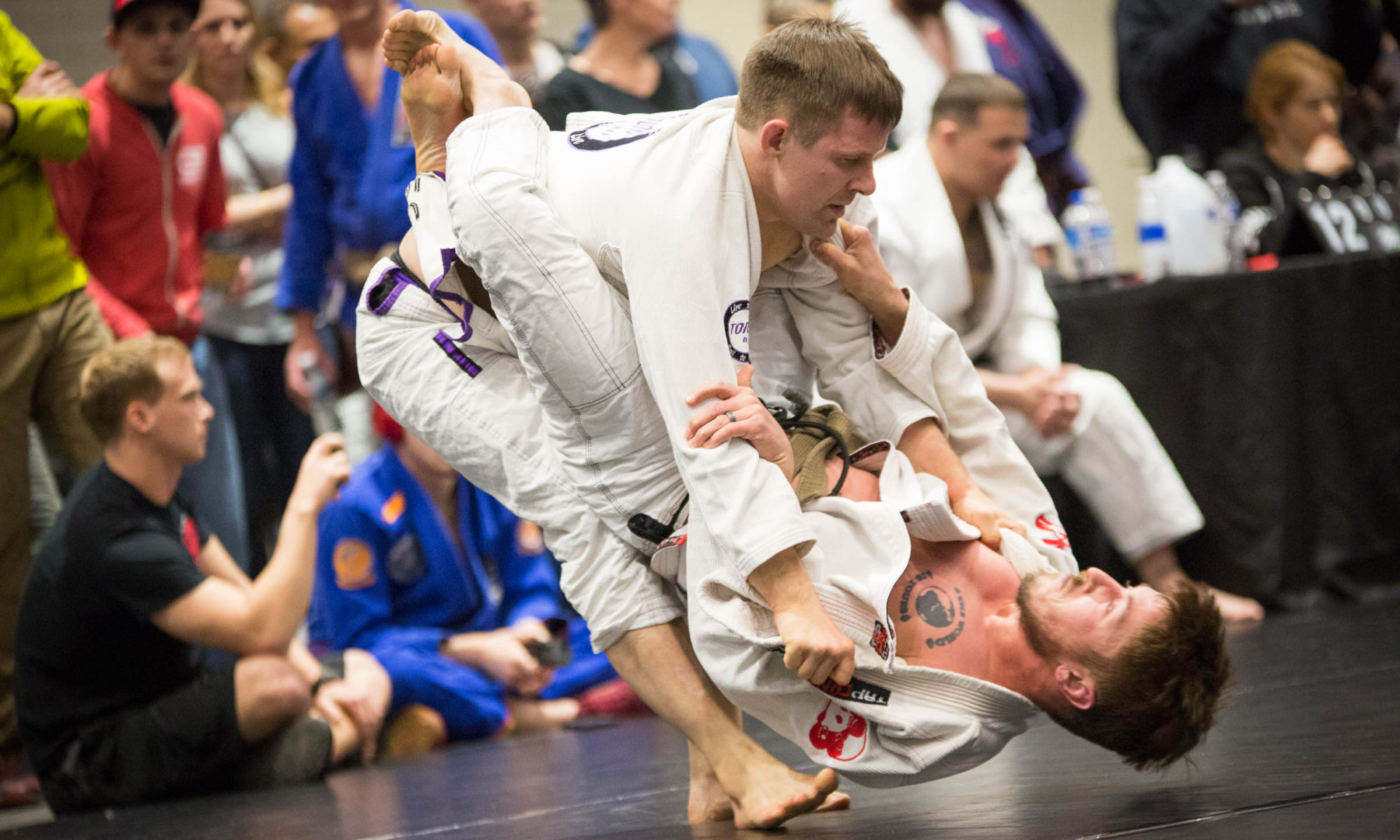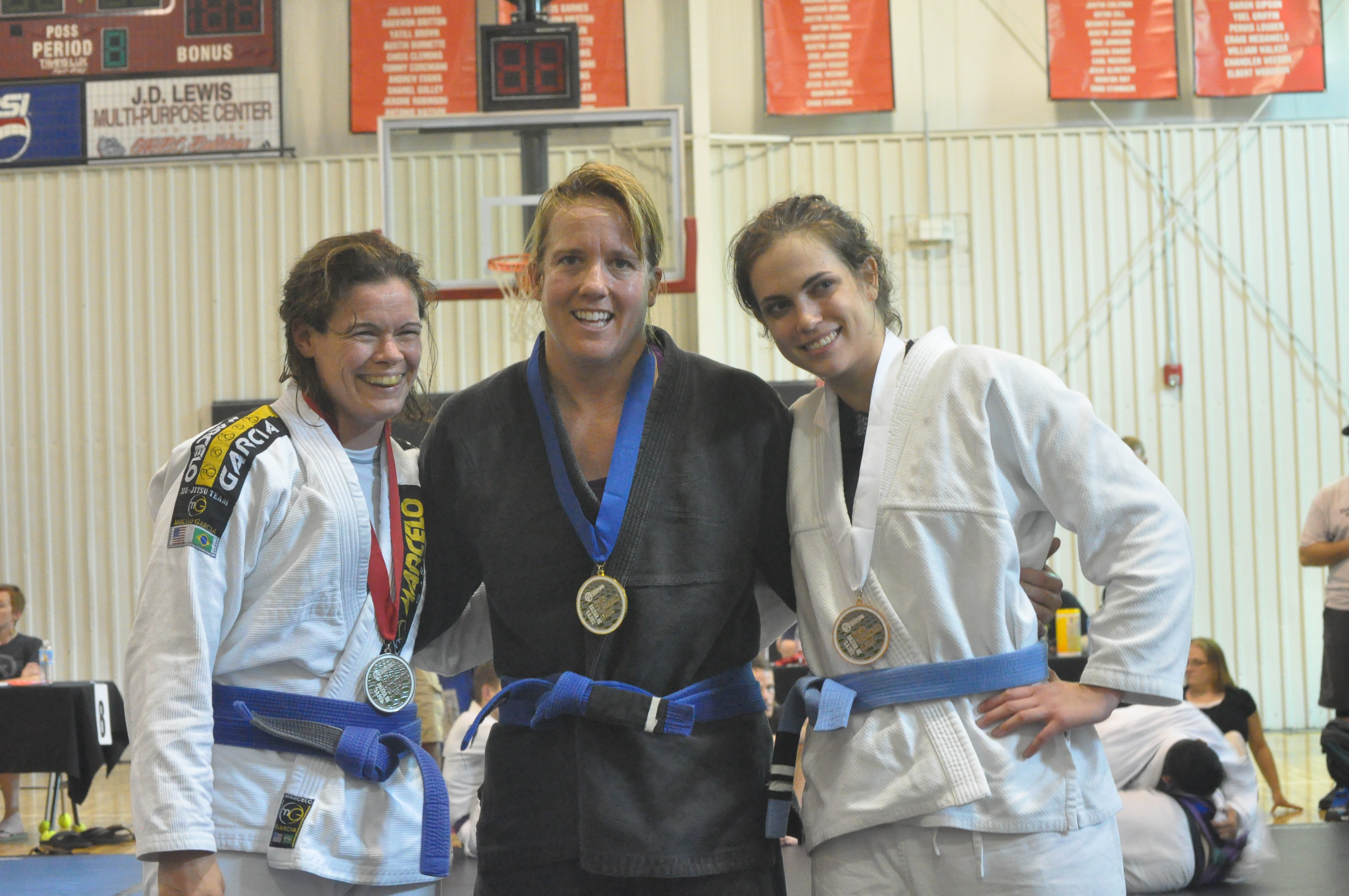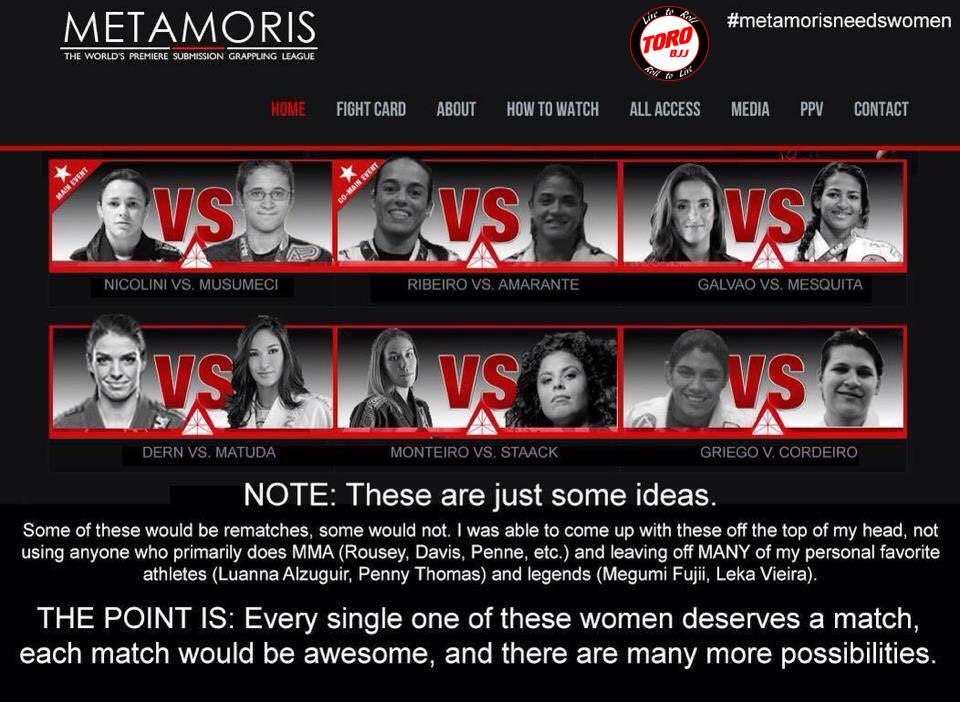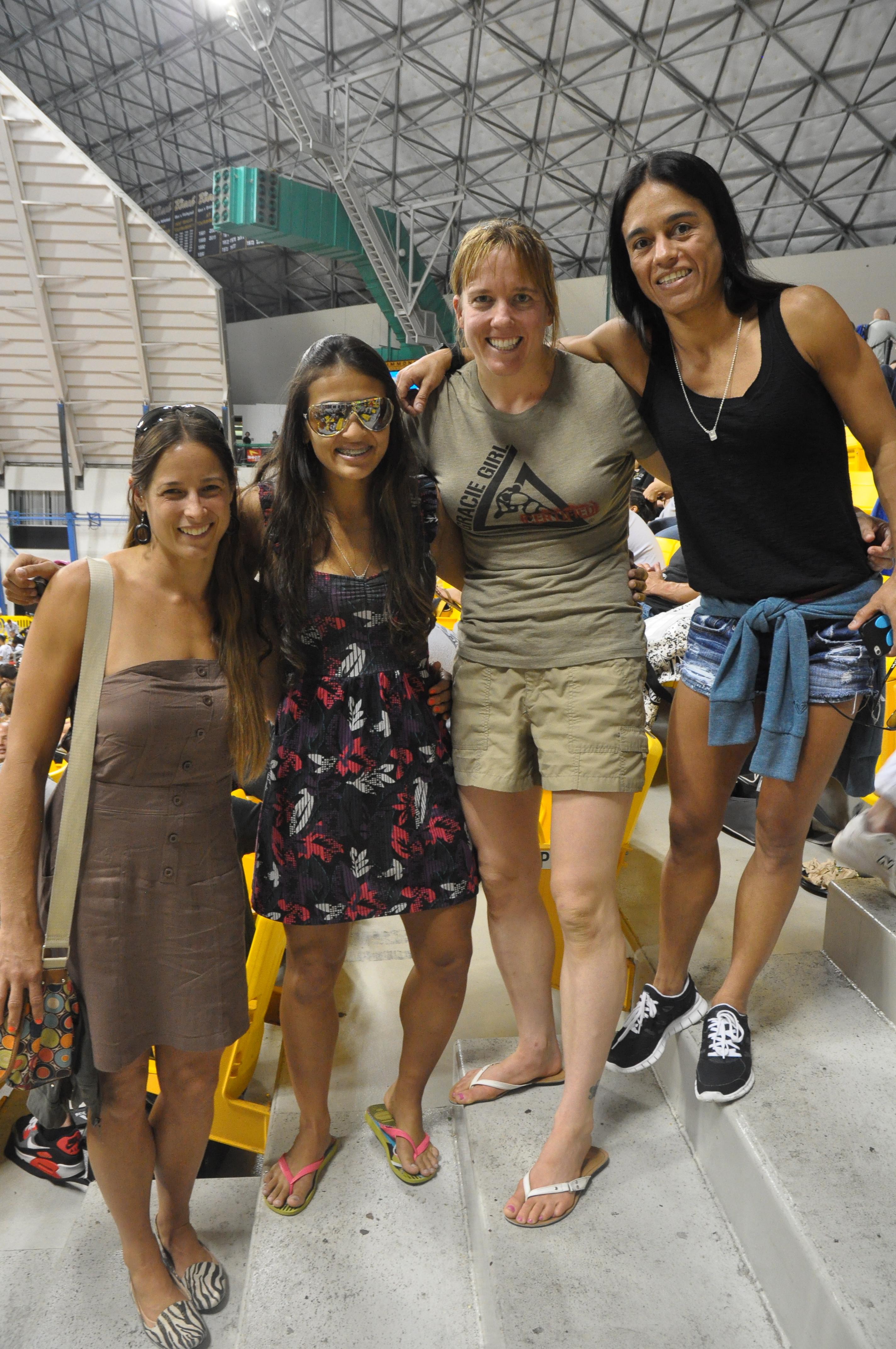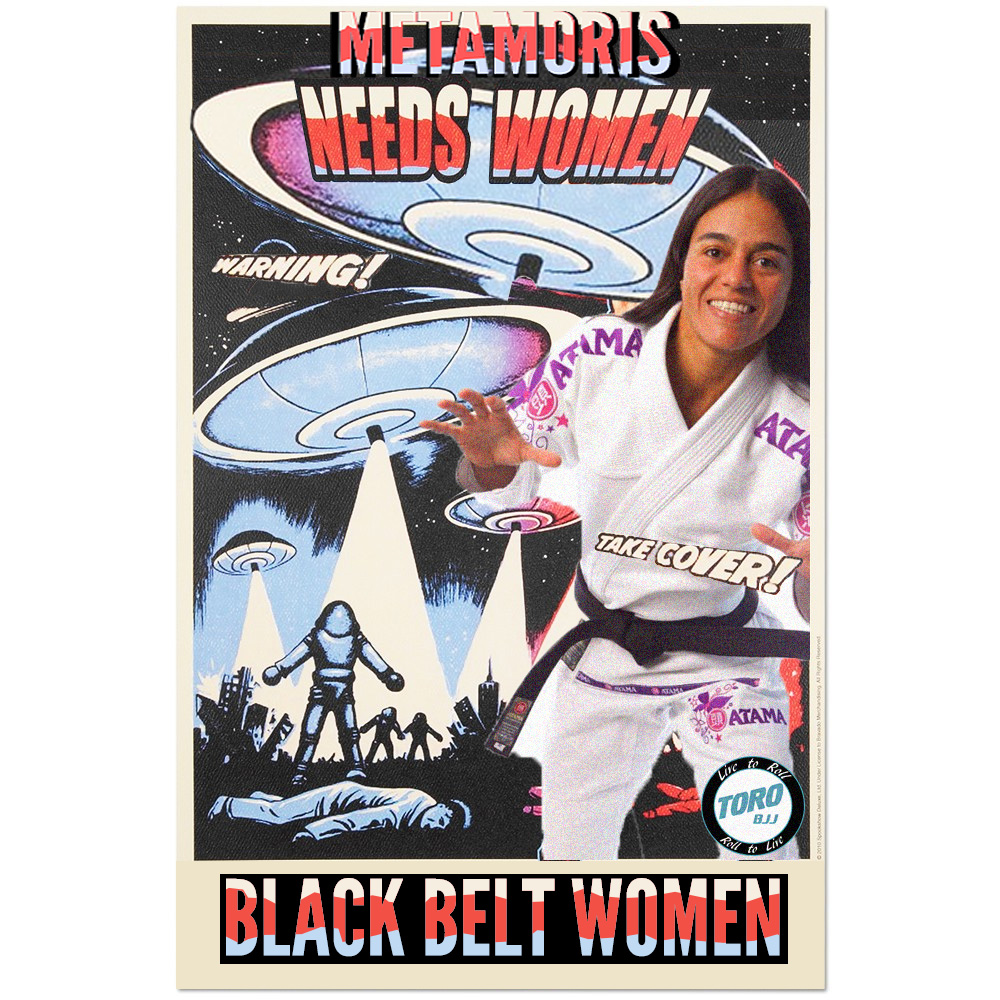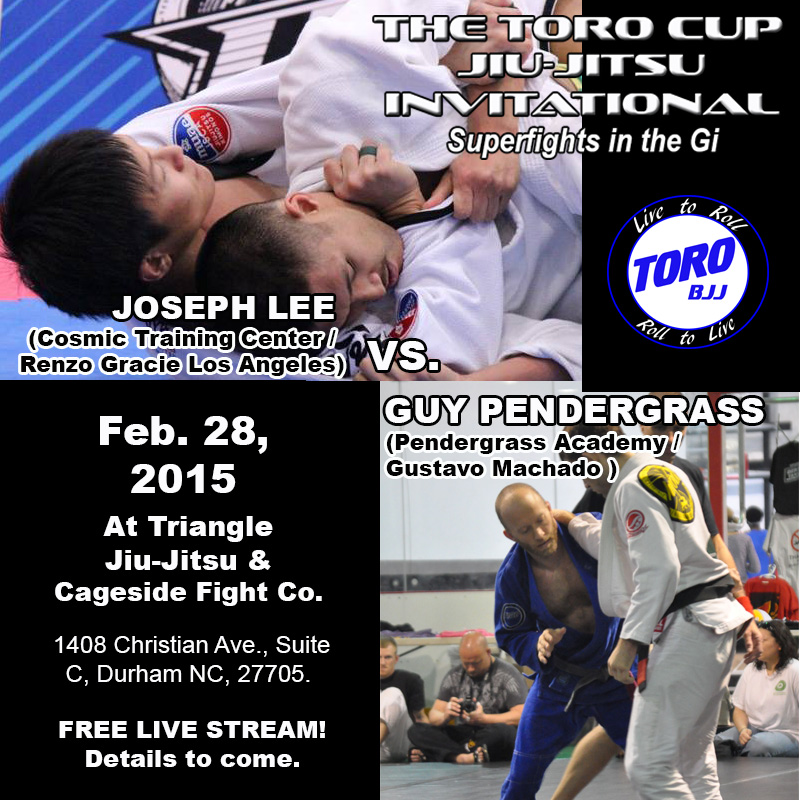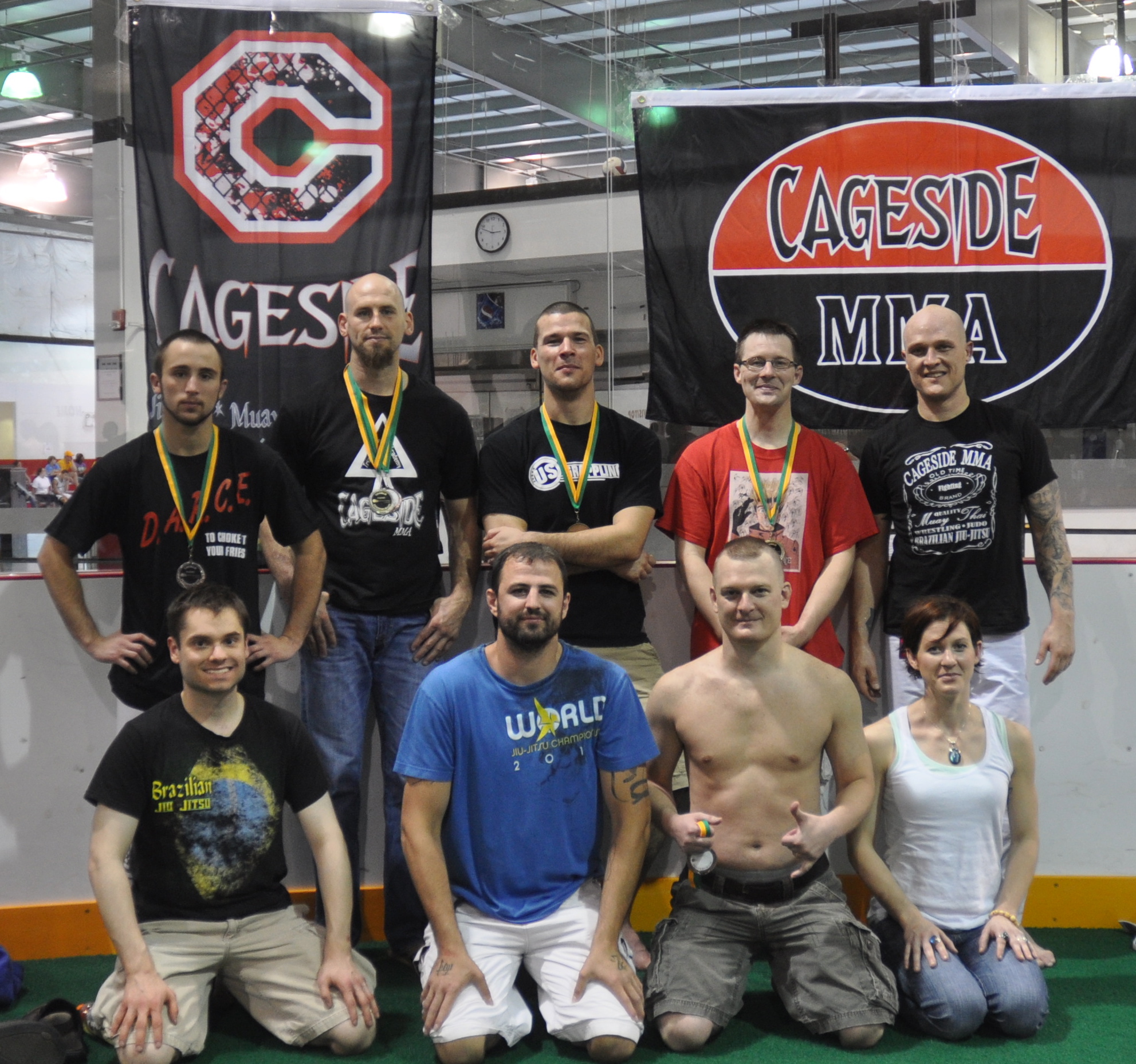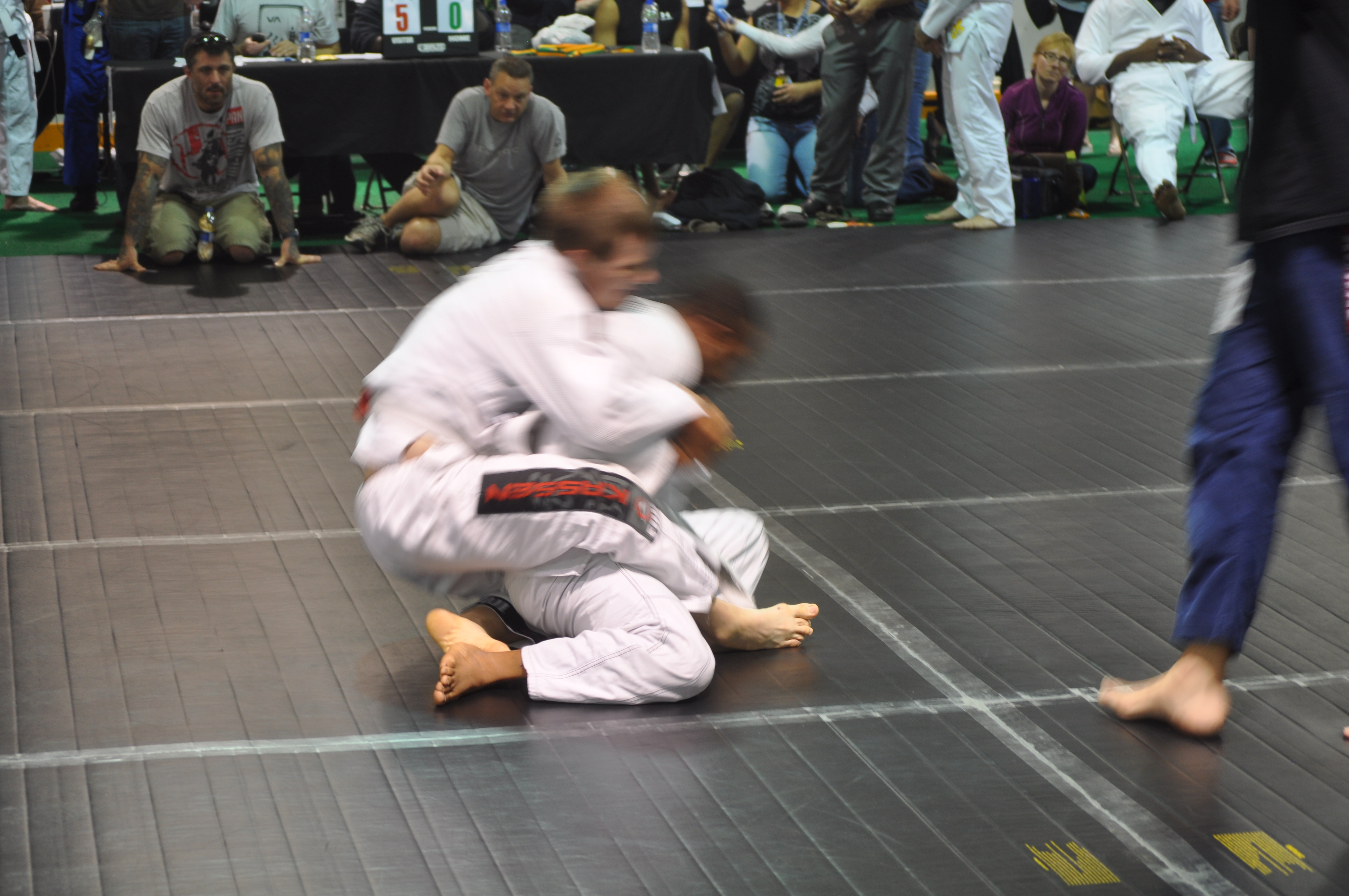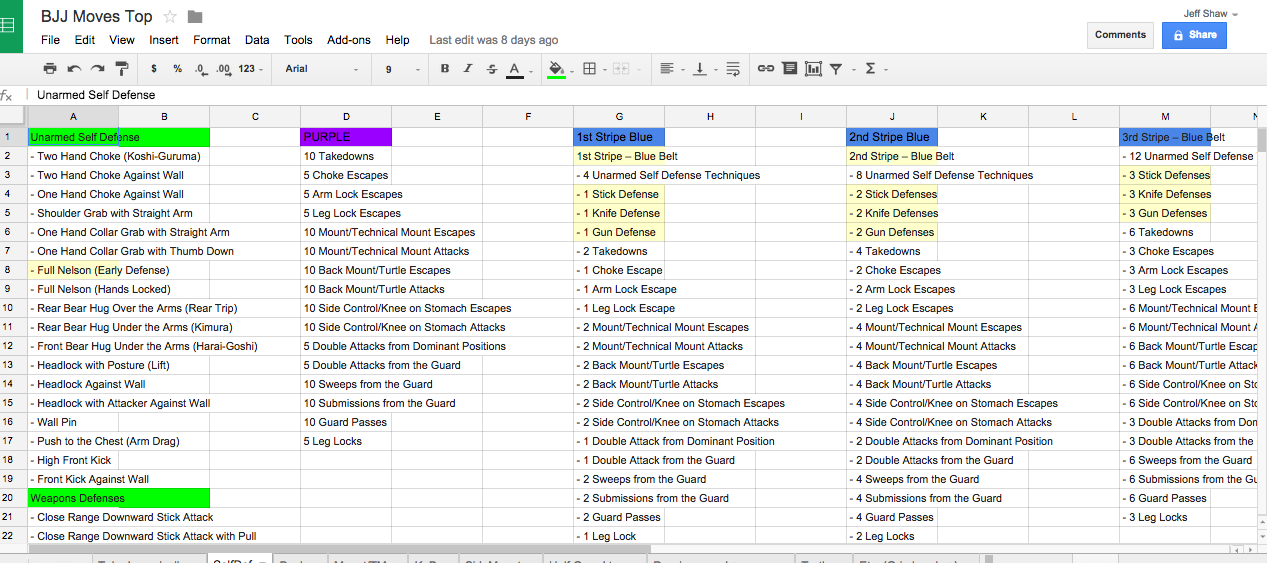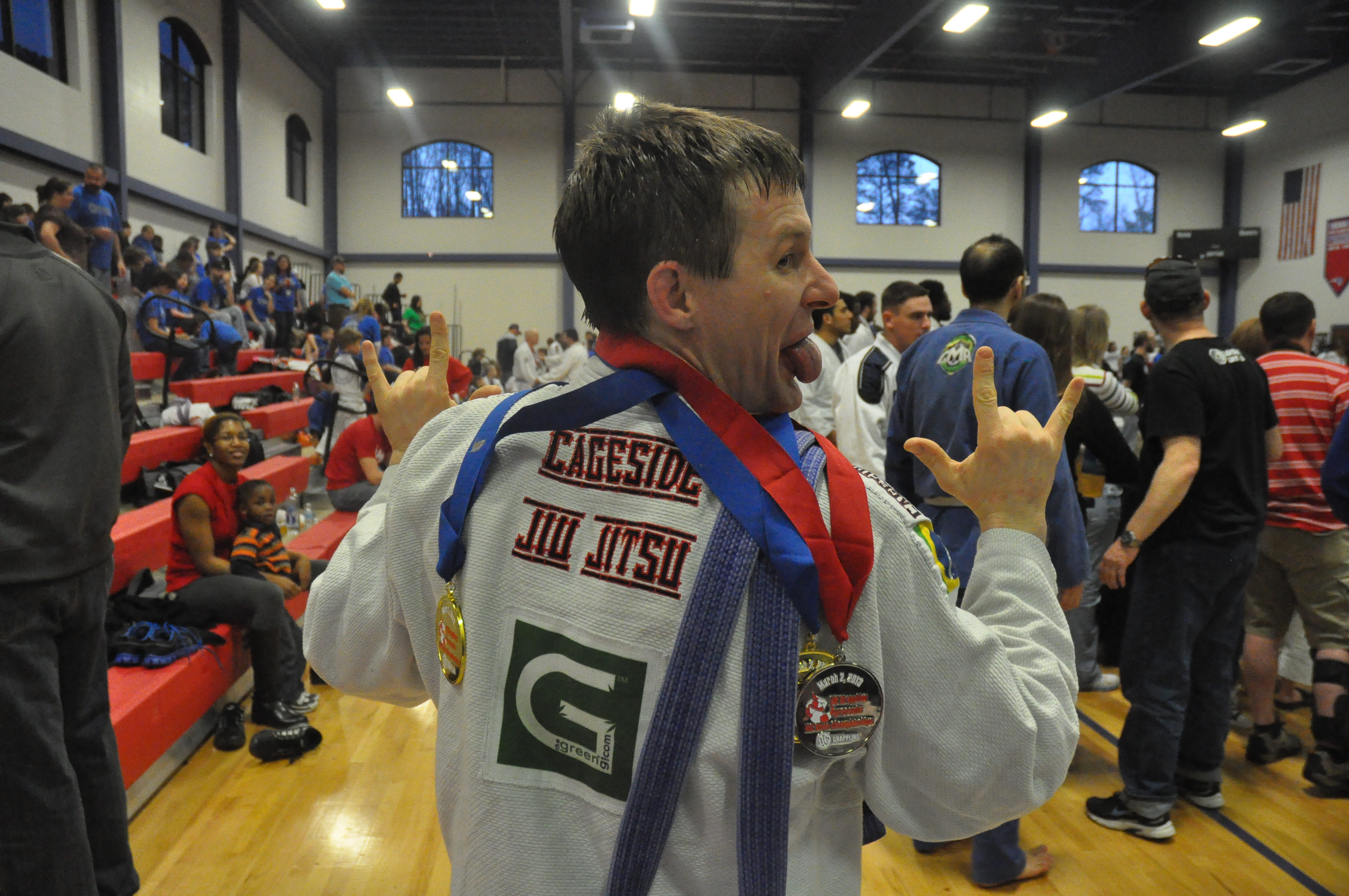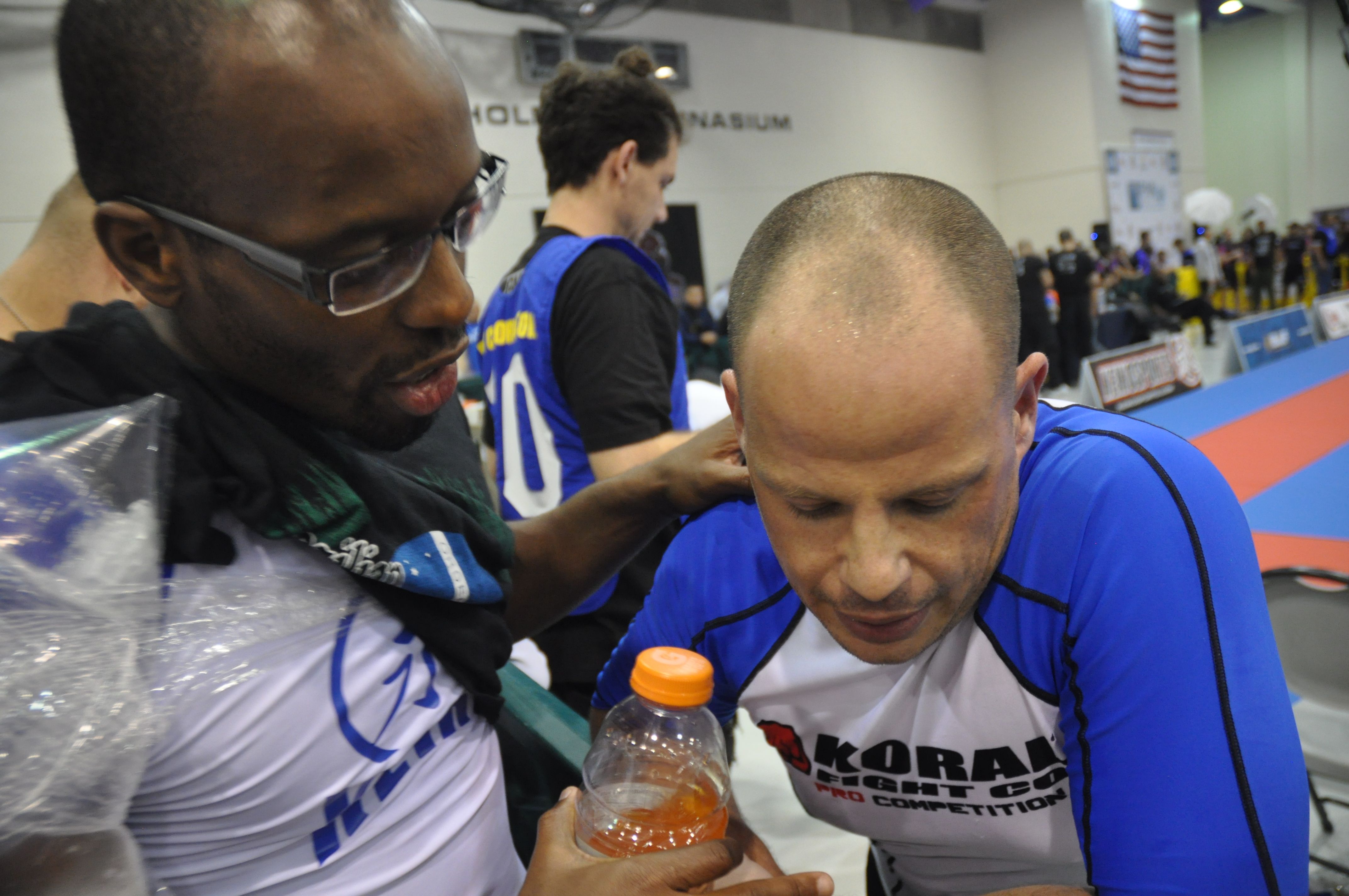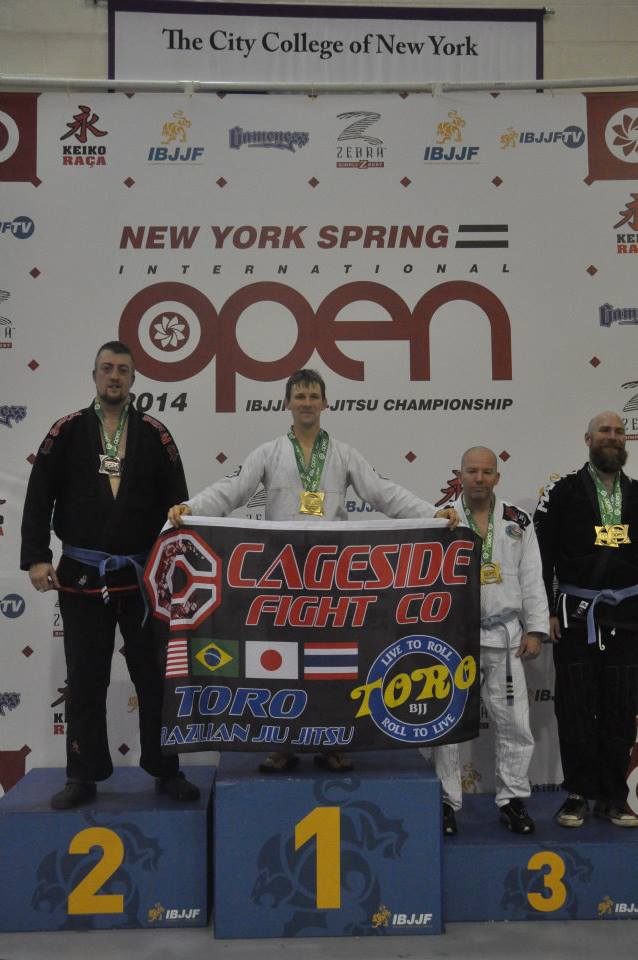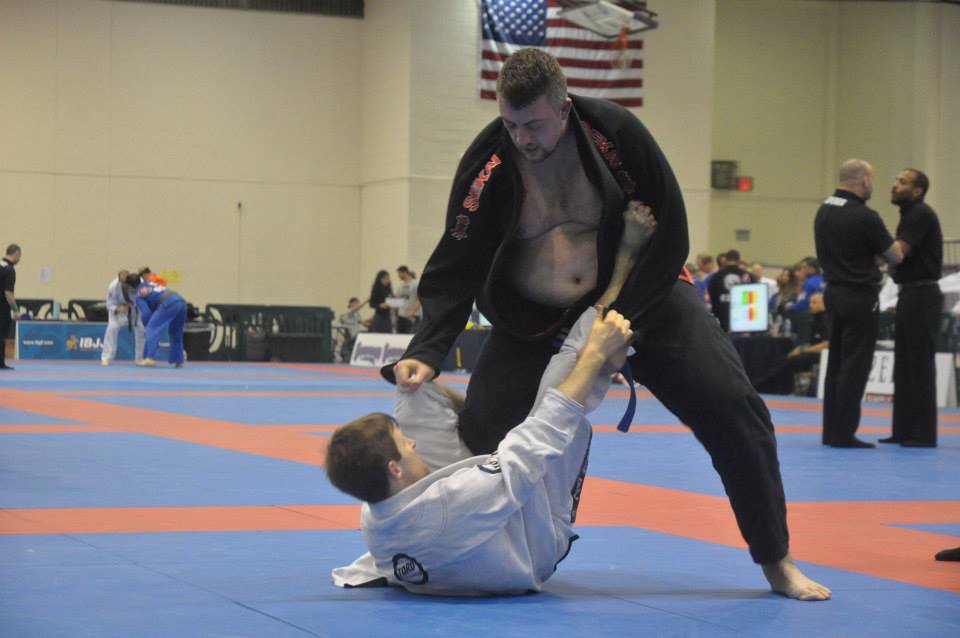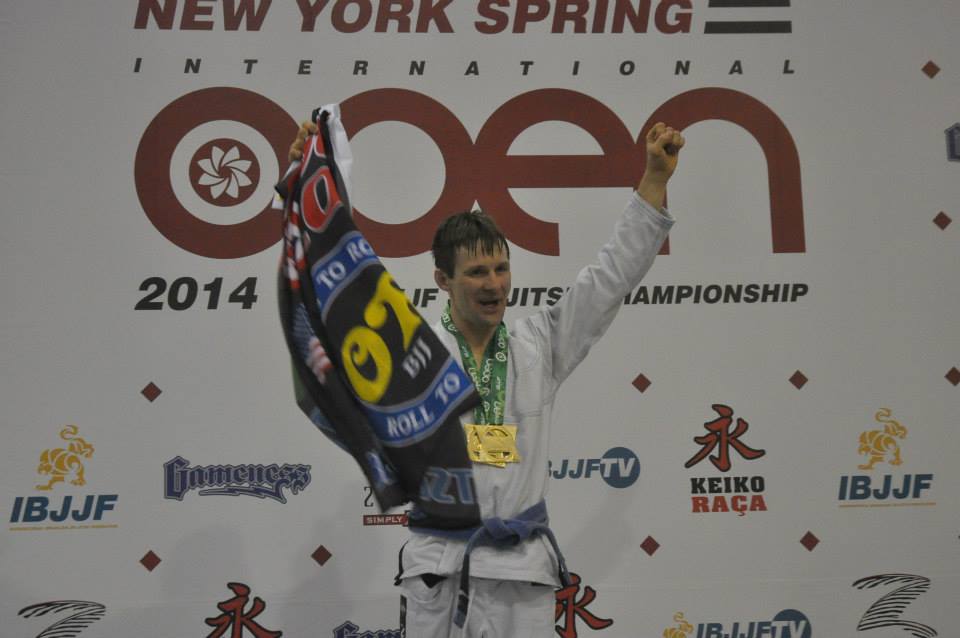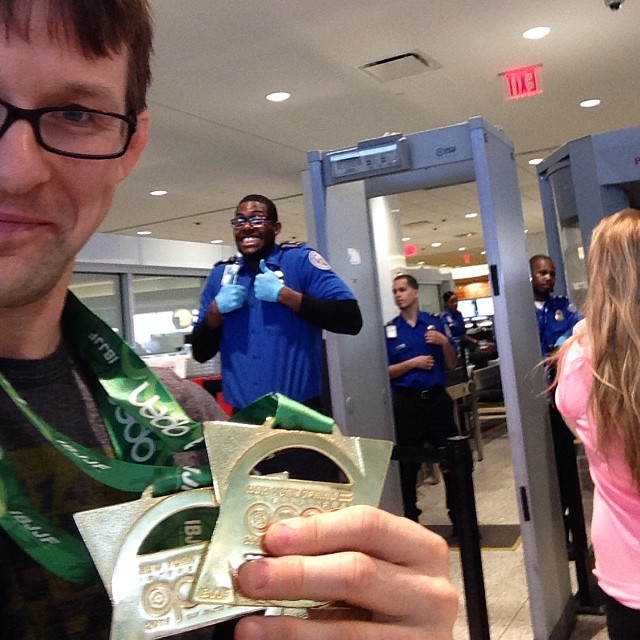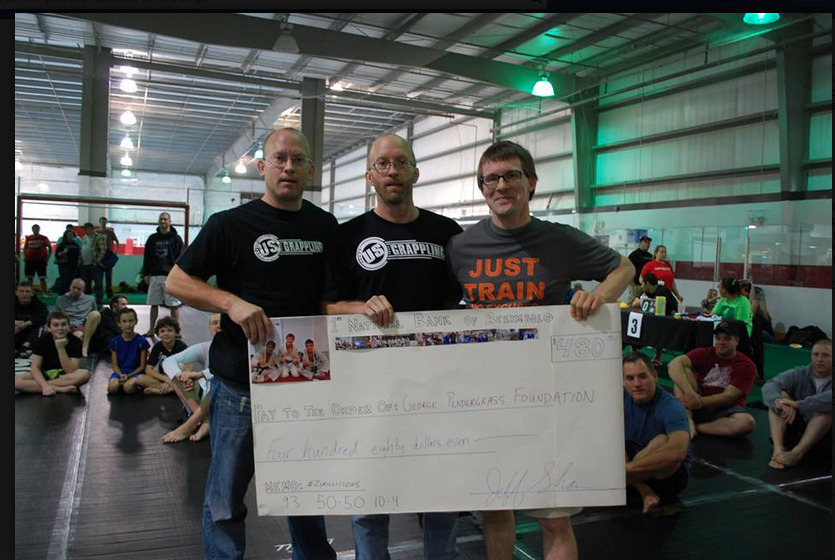As a visitor to another academy, I never expect high-level black belts to roll with me. They’ve earned the right to train with whoever they want to. But Fernando Yamasaki had heard that I was competing at a major tournament soon, and he wanted to help me.
“Come after me,” he said. “Really kick my butt.” (Yeah, like that’s going to happen.)
My philosophy on sparring with people who outclass me is simple: I try to be as technical as possible, to try to do correct movements. I try not to use much strength or athleticism — partially because I don’t actually have those things, but mostly because this person is going to beat me anyway. I might as well be cerebral about my beating so I can learn from it, instead of risking hitting them in the nose and really taking a whooping. I rolled as well as I could against Fernando, but I wasn’t trying to go at competition speed and he knew it.
After the round was over, he put my hand on my shoulder and said this:
“You’re a very nice man,” he said, not meaning it as a compliment. “But that doesn’t work for competition.”
This is my advanced Nogi finals match with Kelly Quinn from this past weekend. Fun match! Thanks Kelly.
Posted by Jeff Shaw on Monday, January 18, 2016
(It sure didn’t work here, but this was still a fun match)
***
If you asked people I train with to describe me, I think that word would come up, nice. I certainly try to be. I also try to be realistic about my own level — I’m 41 and do this as a hobby, often in the 30+ division — and this type of realism creates humility, because realistically, there are a lot of people that are better at jiujitsu than I am. This isn’t something I have to be convinced of: it’s just naturally how I think and who I am.
Which brings up another story about another badass black belt scoffing at me. When I came out for a major tournament, I got pulled out of the bullpen and went to stand by the mat where I’d compete. Jason Culbreth saw me smiling and laughing and waving to people. He tried to give me a lecture about getting into the kick-that-guy’s-ass mindframe. But I just couldn’t stop smiling. This is what I do for fun, I said, and shrugged.
“Well,” he responded with a mix of amusement and disgust, “you’ve got to be who you are, I guess.”
Part of the way I act before the match is rational, and part of it isn’t. The rational part of my mind says that both me and the other guy have prepared as much as we can, and either I’m better than him or I’m not. There isn’t much I can do about it at the point right before the match, so why stress about it?
The irrational part is something that I don’t admit very often, and now I’m going to admit it in public. What I’m about to admit is odd, and it makes me very fortunate.
Once the match begins and we slap hands, I think I’m going to win. Always. No matter what. No matter who the other person is, no matter how badly the match is going. The other person could be a world-class black belt, and I just wouldn’t think about that during the flow of the match. My opponent could be up 25-0, and I’d believe that I was going to catch a neck or a foot and submit him. (This happened to me at the Worlds, when I was down something like 13-2 and I never thought I was going to lose until the timer went off).

This isn’t something I’ve trained: it’s just something that happens, which is lucky for me, because I think the mental aspect of jiujitsu is critical.In order to compete, you have to get rid of doubt.
By itself, this isn’t even very unusual. Most of the successful competitors I know describe something similar, a preternatural confidence.
What makes my experience strange is that, outside of that few intense minutes on the mat, I think I’m very conscious of where I stand. If you were to ask me about certain guys I compete against, I have no problem saying who I think is better than me (which drives my instructor crazy sometimes). During tournaments, I’ll find myself in a situation where I’m in a match with someone who, objectively, should smash me. But that thought won’t even occur to me. A few minutes after his hand gets raised, I’ll think … “wait a second, how did I think I could beat that guy?”
I don’t have an answer to that question. I don’t know why it happens. And I don’t feel like this is something I can take credit for, since it’s just happened for me, the way some people are naturally strong, or fast.
This works both ways, of course. We all know someone who is an absolute beast that, for some reason, doesn’t realize that they should be beating up everyone. I know a lot of competitors these days have mental coaches, which makes sense. Mental attributes are just like physical attributes. We all get dealt a hand by nature, and then it’s up to us to maximize what we’ve been given. You might be naturally strong, but you have to do work to maintain and enhance that. A competition mentality is the same: some people are born with it. Some people need to develop it, just like physical strength.
And maybe you’re strong, but don’t have a lot of flexibility: truly training to be the best you can be involves addressing weaknesses as well as strengths. Even top-level competitors admit to competition nerves. It’s unproductive to complain about the guy in the gym with monstrous muscles: it’s more productive to honestly analyze what your own gifts are, as well as the traits you have to improve.
When I compete seriously, I try to visit as many different academies as I can. My own school will always be home, but if we don’t have class or if I’m traveling, it’s valuable to train with people who do techniques differently, who have different strengths than I do, and people who are just plain better.
I’ll keep rolling with whoever will train with me. And I’ll continue to be as nice as I can. Most of all, in terms of competition, I’ll adhere to the advice of Fernando Yamasaki — modified by the maxim of my favorite philosophy graduate from NYU:
For every job, there is a perfect tool. Life is about taking the tools you’re given and applying them as best you can in the correct situations. I’m grateful for the odd little mental switch in me that flips when the match starts, even if I don’t fully understand it.
